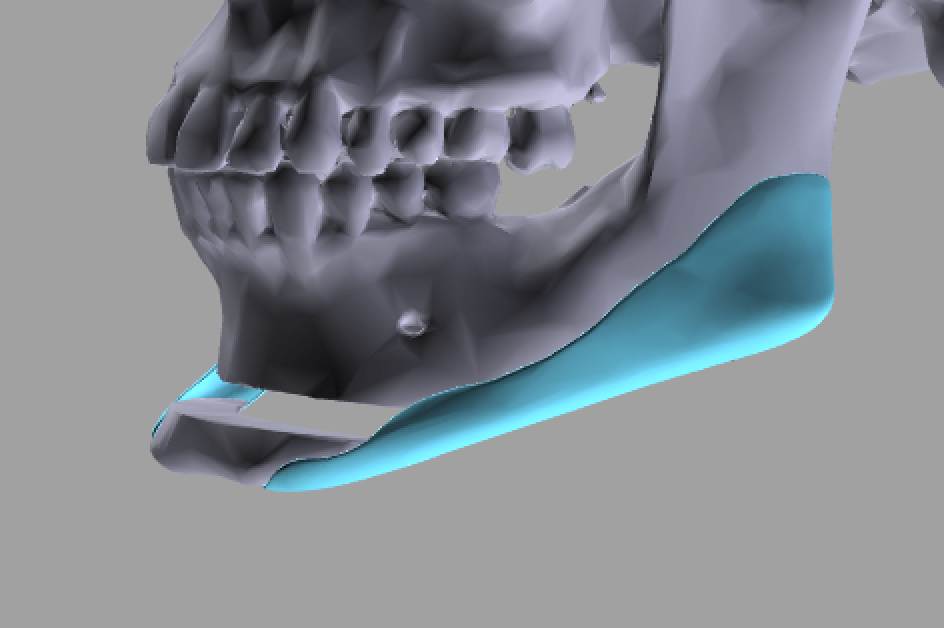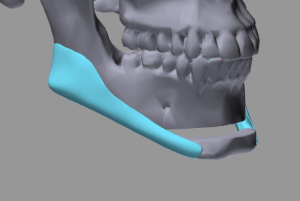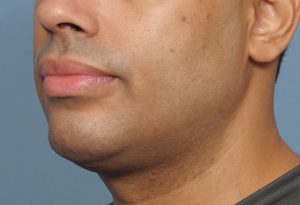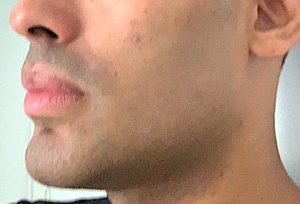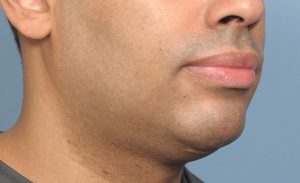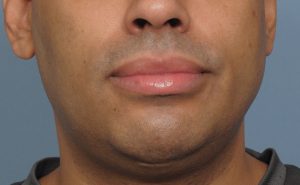Background: Aesthetic enhancement of the lower jaw, also known as jawline augmentation, can be done by several different methods. For the sake of clarification, jaw augmentation means more than just chin augmentation. It means enlargement of the entire inferolateral border of the mandible from one jaw angle across the chin to the other jaw angle. It is a complete form of changing the entire bony shape of the lower third of the face. Again it is not an isolated change of the front end of the jaw (chin augmentation) or a change to the anterior two-thirds of the lower jaw like a chin wing osteotomy does. (it has no effect on changing the shape of the jaw angles)
Jawline augmentation can be done by using either three standard chin and jaw angle implants or a complete wrap around implant. (custom jawline implant) Either technique has its advantages and disadvantages. Less well known are mixing autologous techniques (various forms of bony genioplasties) with implants to augment the bone behind the osteotomized bone segment. The rationale for this combined autologous-implant approach is two-fold. Some patients may prefer to have as little implant as possible in their face and the sliding genioplasty or chin wing is the only bone moving techniques that can contribute to changing at least a part of the lower jaw shape.
But the most common reason for combining a bony genioplasty and implants for jawline augmentation is to decrease an excessive implant load on the chin. When placing an implant over the chin it is necessary to complete elevate all the soft tissues off of the bone to do so. Once the implant is placed the soft tissues must redraw over them and a hopefully non-tight soft tissue closure done over the implant. Because the soft tissue chin pad is a naturally tighter tissue wrap over a solitary projection point, there are limits as to how much it can stretch over an implant. And when possible, it is always a good idea to not have an overlying tight soft tissue closure in which an implant lies underneath it. A bony genioplasty obviates this concern since the soft tissue remain attached to its inferior surface and will always be carried out and down with it regardless of the amount of bony movement.
Case Study: This male desired to have a jawline augmentation but had a short chin in both the vertical and horizontal dimensions. Computer imaging looked at various changes and the dimensions that the chin needed to change was 8mms forward and 4mms of vertical lengthening.
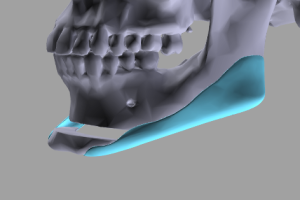

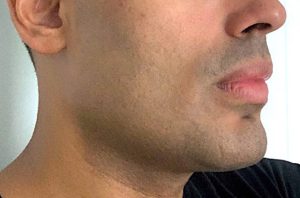
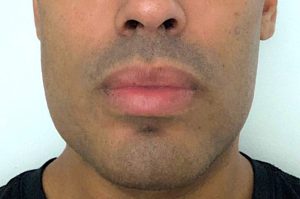
Case Highlights:
1) It is best to avoid too much implant pressure on the chin area due to the detached tissues that are needed to perform the procedure. (lower risk of incisional dehiscence and infection)
2) Total jawline augmentation by a combined sliding genioplasty and custom jaw angle implants provides an autologous-implant approach that avoids implant pressure on the chin entirely.
3) The custom jaw angle implants must cross over the step off defects at the back end of the sliding genioplasty and wrap around the sides of the chin to create a connected and smooth jawline effect.
Dr. Barry Eppley
Indianapolis, Indiana

